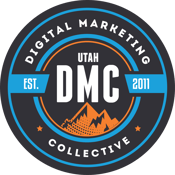PJ Howland - Crush Competitors with Deep On-Page SEO Tactics
The first speaker at our August event was PJ Howland, Enterprise Campaign Manager at 97th Floor. In his talk, PJ examined deep on-page SEO tactics and what strategy is most effective for marketers to help content rank higher.
To first understand the strategy for improving the ranking of your content, it is first important to look at the way Google thinks. Google is a machine, but one that is continuing to be more human-like to provide users with the best service through the content is provides during a search. In the world of SEO, high-quality content that is relevant to the customer’s needs is not a new idea.
As many digital marketers know, keyword research (although beneficial) doesn’t guarantee your content will rank of the first page of Google or even the first 10 pages. Even acquiring numerous followed links to a particular page or article doesn’t guarantee first page rankings on Google and other search engines.
So, how can you help make your content stand out on Google? PJ shared his experience using the tool, TF-IDF, which stands for Term Frequency - Inverse Document Frequency. According to Wikipedia, this is a numerical statistic which identifies the importance or relevance a word is to a document and then allows you to see which other terms are most associated with your specific keyword.
Nice... @askPJHowland argues the reason Google is so great is because of us (SEOs) & the content we create #slcsem #SEO
— Elisabeth Osmeloski (@elisabethos) August 17, 2017
For example, the keyword “coconut oil” in a high-quality content piece about baking is not guaranteed to rank or be relevant if the majority of people are searching for how coconut oil helps with diaper rash. Although you’ve used the keyword “coconut oil” your content is not helpful to users because they want to know how how it helps with diaper rash.
Then how do you make sure your content is in alignment with what people are searching for? This is when TF-IDF comes into play. By using the paid tool, Ryte, you can take a competitor or high ranking content piece and see what other relevant words or themes are being used in the article.
In the end, having high-quality content is not always enough. You want to make sure your content is niche specific to stand out and rank higher on search engines.
Want to review PJ's slides in full? Head over to his SlideShare!
Alan Bleiweiss: Adapting to a Mobile World That Benefits Desktop
Alan Bleiweiss, the concluding speaker of the night, shared his expertise with us on how to adapt desktop focused SEO strategies to an evolving mobile world. He introduced this topic by explaining upcoming changes in indexing that will affect Google search rankings.
In the past Google search rankings were determined, in great part, by the index of the desktop site, but not the mobile site. However, with Google’s upcoming mobile-first index, rankings will be based primarily on the mobile index. Bleiweiss warned, that if left unchanged many companies will face a rude wake up call once mobile-first indexing begins, and in a world that is becoming evermore mobile having a healthy mobile presence is vital. So what do you do? Here are two options Bleiweiss presented for optimizing your site for mobile.
Responsive Design and AMPBuilding or remodeling your website to have a responsive design is a great option for preparing for the upcoming mobile-first indexing change, and creating an optimized mobile site. The advantage of having a responsive site is that one set of code will work for both your desktop and mobile site. This is ideal, because you don’t have to code a new mobile site, your content is identical for both platforms, and responsive sites give you a lot of design and functionality freedom.
Presently Google is advocating AMP, or Accelerated Mobile Pages, an online publishing format that was created by Google. AMP is used to create fast webpages across devices. Some drawbacks to be aware of are that only pages where AMP is applied become faster (and not the whole site), AMP requires a separate code from the desktop site, there are is less functionality freedoms, analytic tracking issues are likely, and Google may abandon this framework in the future. However, the advantages of AMP are that it’s recommended by Google, it’s fast, and is always evolving. While creating a responsive website is a great option for almost any company utilizing AMP also has benefits. How your company should utilize AMP is a strategic decision that will be unique to each company. Bleiweiss recommended the following resources to get started with AMP.
. @AlanBleiweiss commiserates on the frustrations of AMP we've all felt. #slcsem #imwithyoualan pic.twitter.com/pSDkrEXHOZ
— PJ Howland (@askPJHowland) August 17, 2017
Learn to Create AMP Pages
Test AMP Pages
With this understanding of best options for mobile optimization, Bleiweis presented the following key steps for adapting a desktop site to mobile.
How to Adapt a Site for Mobile
1. Educate yourself about mobile indexing:
Get online and learn. Here are a few helpful resources.
- www.thesempost.com/google-mobile-friendly-algo-guide
- https://webmasters.googleblog.com/2016/11/mobile-first-indexing.html
- http://searchengineland.com/faq-google-mobile-first-index-262751
2. Decide what will work best for your situation:
There are no one-size-fits-all answers here. Understanding indexing, and the options available for mobile optimization such as creating a responsive site and/or utilizing AMP will be a decision that you will have to make to best fit the unique needs of your company.
3. Remember to factor desktop needs:
While the world is becoming more mobile, at the present most users are still using a desktop device. Both desktop and mobile platforms need to be maintained and optimized. As you optimize for mobile and desktop remember this key consideration, mobile internal links and core content must match the desktop site to do well on Google.
4.Understand local isn’t always local:
Serving the right content to site visitors is essential. Mobile devices often use GPS location to make location based suggestions, however when location is based on IP address (such as when your mobile location is turned off or when on a desktop) a user's location can be many miles off. Having a site that allows users to input their location is one good solution to this problem.
- Make a plan based on 1-4.
- Implement your plan.
- Observe, monitor, and adjust.
Having an optimized mobile and desktop site will be essential in the near future. If you use the key steps above while preparing for the upcoming mobile-first index change your site will be well prepared for the future.

